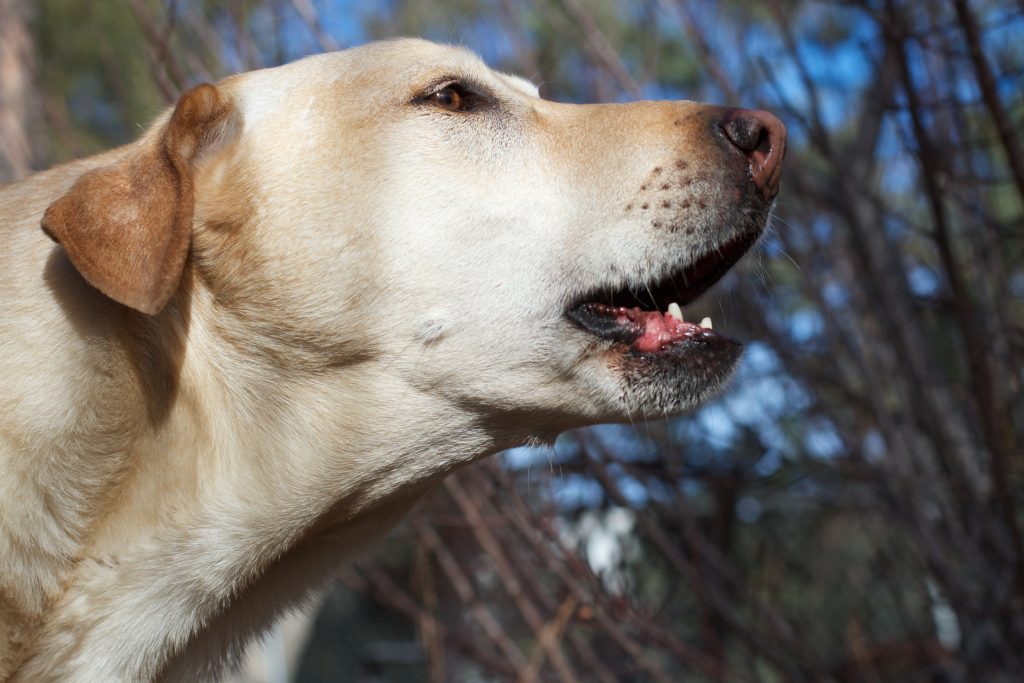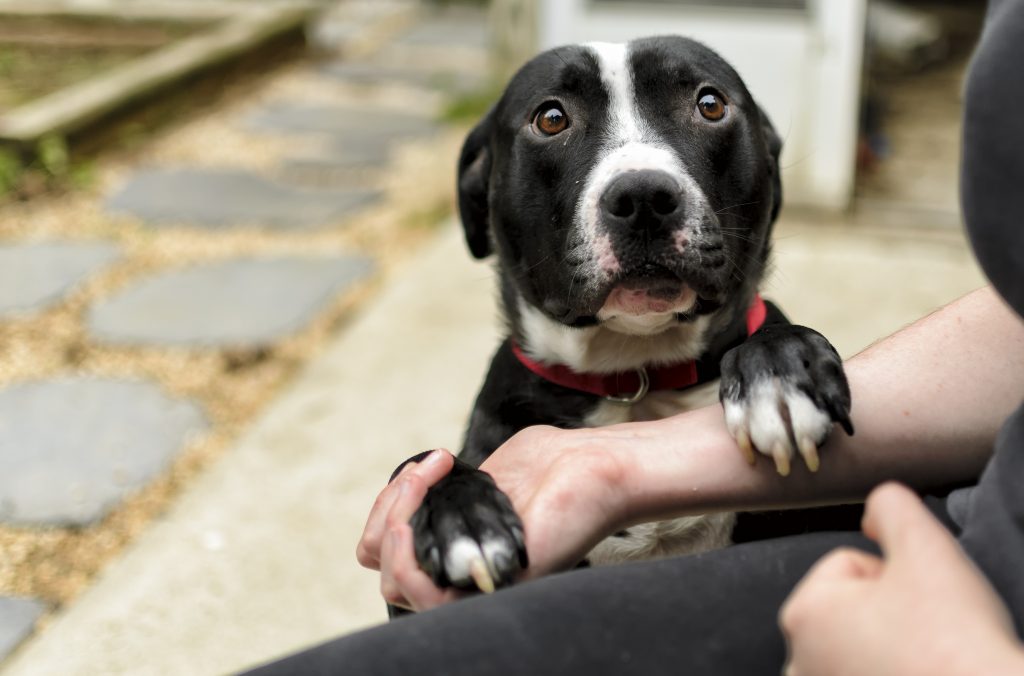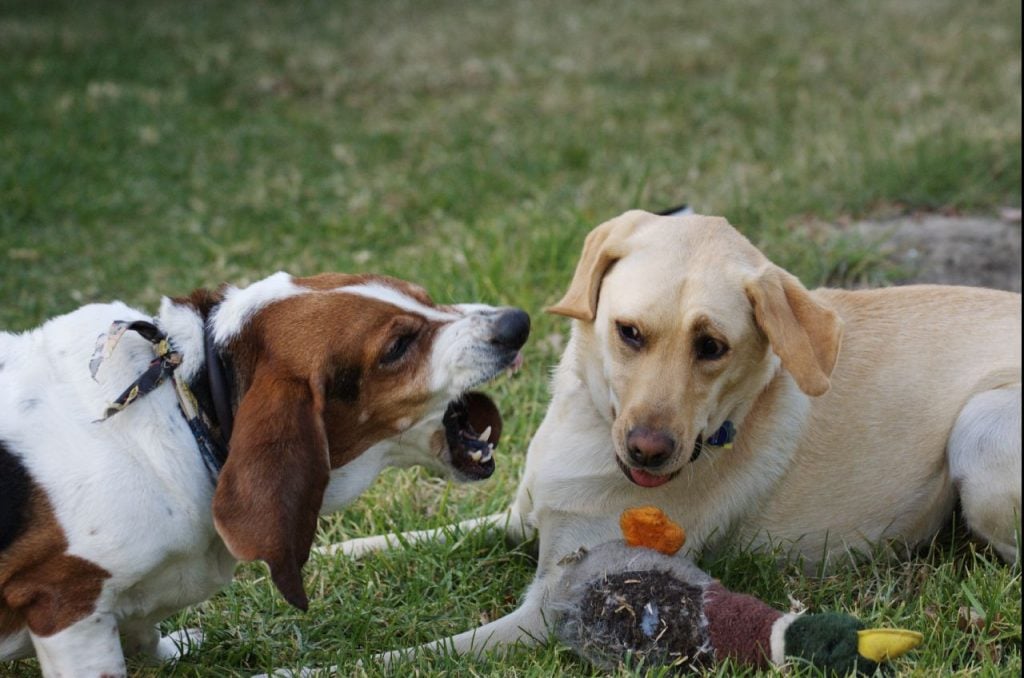
Our
dogs communicate with us every day! To help you get in on the
conversation, we’ve created a handy list of dog sounds and what they
mean. Dogs use their voices to communicate with us as well as their
surroundings, and it’s helpful to get a full picture of what each sound
can indicate. Don’t forget to combine this information with what you
know about dog body language, and you’ll get the whole story your dog is trying to tell you.
Your Guide to Dog Vocalizations
We’ve got the scoop on barking, howling, whining, yelping, and growling. Learn what your dog is trying to tell you with each of these distinct noises.
Bark
Barking
is a common sound, but what do the varieties mean? Depending on their
duration and pitch, barks can be an alert, a distress signal or a
friendly hello.
- “Who’s out there?”- Alert barking is the soundtrack to the mailman’s day. If you hear your dog barking rapidly, it’s a warning that someone is entering their territory.
- “Where are you?”- Nonstop barking can be a sign of separation anxiety. If your neighbors reach out to you because they can hear your dog barking incessantly when you’re away, your furry friend is probably a little lonely and wondering if anyone is there.
- “Hello! I’m happy to see you”- If a dog greets you with a couple of happy barks, they’re saying hello. It may even be an invitation to play!
- “Knock it off!”- A single short bark is a way that dogs tell others to stop what they’re doing. This can often be heard during rough play when one dog is overwhelmed.

Howl
Howls are a reminder that dogs descended from wolves. They use the mournful sound as long-range communication.
- “I’ll guide you with my voice!”- if you’ve been away at work all day, your dog may be howling to guide you back to your territory, just like her ancestors did for their pack.
- “Stay away”- howling lets other dogs know that this territory is taken, and that they better stay away.
- “I’m so lonely!”- an anxious or sad dog may howl in response to being left alone.
- “What’s that sound?”- your dog may be howling because they’re reacting to a stimulus such as a fire engine siren or a backfiring car.
Yelp
Yelping is loud, sharp, and can be surprising. If your dog yelps, it could be for a couple of reasons.
- “Ouch!”- It can be a sign of sudden pain. Your furry friend may have been stung by a bee, stubbed their paw, or gotten their tail stuck somewhere.
- “That scared me!”- A yelp can also be a sound of surprise. If your dog knocks something over or is startled from sleep, their response may be to yelp.

Growl
Growling
is a way for dogs to express their displeasure or irritation. However,
they also can growl in play. Here’s how you can tell if your dog is
growling as a warning or in fun. Remember to also watch their body language.
- “Please stop doing that”- A growl is first and foremost, a warning. If a dog is feeling uncomfortable or stressed, they may let you know by growling.
- “This is fun!”- If two dogs are playing, they may also growl at each other as a part of play. Pay attention to body language. If the dogs are loose and wiggly, a growl means that playtime is still on. If hackles are raised and the dogs are stiff and staring at each other, a growl means “back off” and that it’s time to separate them.
- Reminder: NEVER punish a dog for growling. Instead, remove them from the situation that is upsetting them. If you punish a dog for growling, they may stop warning you in situations that upset them and could go right to a more serious response, like a bite.
Whine
Whining
is used by dogs, and puppies especially, to get attention. Here are a
few translations of what your dog is saying when they whine.
- “I need something”- Whether a trip outside, attention, or a treat, your dog often is whining to tell you that they’re missing something in their lives that you can fix.
- “I’m upset”- Your dog may whine due to pain, stress, or nerves. Be sure to check your dog for injuries or comfort them if they seem to be in distress.
- “I’m so excited!”- Does your dog whine with joy when you come home? Their full-body excitement at your return can also be accompanied by whining.
The
sounds our dogs make can tell us a lot about how they’re thinking and
feeling. By listening to their vocalizations and combining them with
what we know about dog body language, we can have conversations with our
canine companions—and hopefully avoid confusion. So the next time your
dog whines, yelps, or barks, you’ll know exactly what they’re trying to
tell you!

